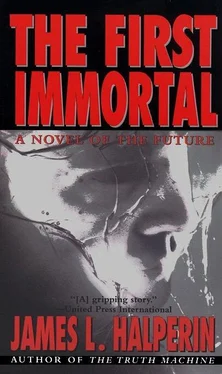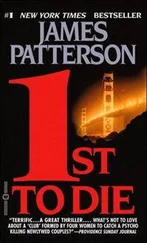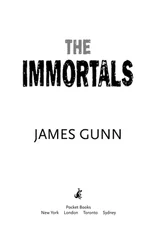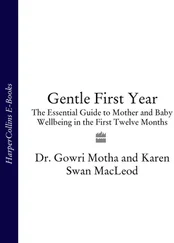“Fuck me, I’m screwed!”
Zambetti surveyed the damage in open-mouthed horror. “Holy mother of God! You okay?”
“Fuck, fuck, fuck!”
“Does it hurt?”
Lomax hesitated while his shock dissipated, abandoning him not only to intense pain, but also to his habitual authority and resolve. “Can hardly feel it yet,” he lied. “But in a few minutes it’ll start bleeding like a fire hose. Shit. So stupid! You guys’ll hafta finish the drilling without me. Grab a coupla low-temp receptacles and refill her canister with the flow from the ones you haven’t drilled yet. Then let’s get the hell outta here.
By the time Lomax tied a tourniquet around his wrist, Zambetti and Witter had finished nuking and draining the last of the canisters. The three men imagined they could already smell the rotting flesh of their victims.
It was now 2:46 A.M.; one brain had been spared, one had possibly been rescued in time. 508 were definitely toast. The other two wondered if Lomax considered saving this woman worth losing his right hand. Zambetti prayed to God that the trauma hadn’t destroyed her brain. If it had, his fellow soldier of justice had just turned himself into a cripple for no reason at all.
August 2, 2021
—The first serious crime committed by a Europe-based machine, an Intel 48T data processor powered by DAP Synthetic-Brain software purposely murders a human in Düsseldorf Germany. The victim, Dr. Fritz Wichmann, is electrocuted after declining the machine’s request to be connected to the Infobahn. The 48T is scheduled for destruction tomorrow morning, and DAP has recalled all S-B software.—In the wake of today’s shocking murder-by-device, Senators John Comerford (D. FL) and David Berryman (R. TX) propose legislation to ban the programming of emotions, survival instinct, or the ability to contrive deceit into any machine. An interim ban on such programming is enacted pending the final bill’s passage. Former President Garrison Roswell predicts, “The United States Software Act (S. 2343) will be debated and revised for the better part of a year, then some version of it will pass both Senate and House.”
The newly elected fifty-two-year-old Pope John Paul IV, who just last month had held the title of Cardinal Carlos Juan Riesco, sat inside a VR chamber at Vatican time eleven A.M. In twelve cities throughout the world, his dozen most trusted cardinals perched inside identically configured units. It was a decidedly un -godly three A.M. in Boston, where Cardinal Joseph Hannah now tried to appear alert.
Most of the thirteen prelates considered the Catholic Church’s reputation for stubbornness unwarranted. They no longer burned heretics at the stake or prosecuted women for witchcraft. Way back in 1989 the Church had revised its position on cosmology, admitting their previous error of forcing Galileo to recant his “preposterous” theory that the earth orbits the sun. They’d also sanctioned inoculation and anesthesia, twice reclassified evolution—first as “open for discussion,” then as “a possible device plan”—and recently modified their position, however superficially, on birth control. These were not unreasonable men.
Never far from the thoughts of the holy fathers was the fact that over the past six years the Catholic Church had lost over a quarter of its American membership, a trend that threatened to globalize with the inevitable spread of pro-cryonics legislation. Furthermore, if no Catholics were frozen, none would be revived, a distinct disadvantage in the contest for religious prevalence. The new Pope was well-known as a reformist, a label that had once impeded his advancement, but had recently accelerated it.
“I am prepared,” the pontiff began in English, “to consider the possibility that cryonics might reasonably be construed a medical treatment, not an interference with God’s will. I would hear your opinions on this subject.” What he meant—and all dozen cardinals knew it—was: Give me justifications for altering our position, not arguments against cryonics. The decision itself had already been made.
“When your predecessor declared that life and death are matters for God to determine,” Bishop Hannah began, “he might not have meant this quite as it sounded. I think he may have been more concerned with the unproven nature of cryonic treatment, and did not wish to risk the living to it. I am aware of no specific objections raised by John Paul III to the crystalline preservation of those already dead.”
“Yes,” the Pope agreed, “but I’m afraid that does not get us very far. Certainly many Catholics will wish to freeze themselves before they die. The theory, as I understand it, is that by waiting until after death, memory may be lost.”
“John Paul III could not have possibly meant that we should not try to lengthen lives whenever possible,” Cardinal Mohandas Ranganathan from Bombay offered. “Clearly it is undesirable to disconnect body and soul prematurely. For centuries a doctrine of our Church had been that the taking of human life, whether murder, abortion, mercy killing, or suicide, is a sin. Therefore he must have regarded freezing as tantamount to death itself, perhaps because it was legally defined as such. Now that those in biostasis are no longer adjudged legally dead, perhaps his criterion would have been subject to reinterpretation.”
Cardinal Kwayme Knau of Ghana chimed in, “In truth, under this redefinition of death, it could easily be argued that failure to freeze would be a sin. Are you certain you wish to accede to such an, ahem, unorthordox reconfiguration?”
“Perhaps not,” the Pope answered, “but I am open to that which both accommodates and preserves. Any other observations?”
“The key may rest in our tenets in re the nature and purpose of the soul,” Cardinal Alan Kidman of Melbourne suggested. “Perhaps with the complexity of modern life, the soul needs more time to grow, to reach its God-envisioned potential. It’s possible that eighty to one hundred years is no longer enough time for creditable attainment of life’s spiritual goals.”
“Sufficient time,” Ranganathan interrupted, “is even more critical for the perilously uncertain souls of the unsaved. As compassionate Christians, should we not welcome another chance to save such souls, rather than abandoning them to hell?”
“Excellent points,” the Pope said. “But that hardly addresses our outlook on cryonic suspension of good Catholics.”
“True, Your Holiness,” Cardinal Gennady Argounova of Kiev agreed. “Still, we must be optimistic. A soul that is already saved will likely remain saved, even if its vessel should survive for millennia. At least that is my opinion.”
The Pope nodded. Experience had taught him to be less confident in human religious steadfastness, yet he could hardly see his way to disagree with Argounova. Besides, increased longevity would inevitably belong to future generations regardless of the Church’s position on cryonics. Biostasis was simply a way to allow this generation some chance of sharing the long life its offspring would enjoy regardless. And a Catholic was unarguably more apt to remain Catholic than was a non-Catholic likely to convert to Catholicism. The real issue was the survival of the Church.
“I hate to bring this up now, just when we seem to be nearing consensus,” Cardinal Angus Kennedy of Belfast said, “but how will the Church regard marriages when one of the spouses becomes the metaphoric equivalent of a frozen embryo?”
“I suppose I am open to suggestions on that issue, as well,” the Pope said. “But we needn’t rush to cross bridges.”
Nearly six more months passed before the Vatican released its encyclical on cryonics. Suspendees became, in the eyes of the Catholic Church, “potentially living humans, the disposition of whose souls is known only to God.” Marriages involving one partner in biostasis could be maintained or dissolved at the option of the surviving spouse.
Читать дальше












